|
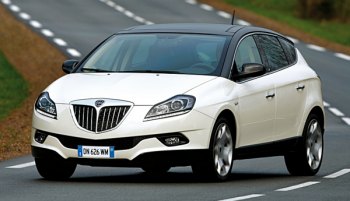
|
Sergio Marchione made a big mistake:
named this car as "Delta"
|
To
many people, Lancia is a forgotten name in automotive industry.
Acquired by Fiat group in 1978, it was never turned into a successful
business model. The early Lancia under Fiat group concentrated on
rallying campaign, but after its mother company found rallying success
would not turn into sales success, it abandoned racing and was turned
into a premium brand. Unfortunately, without the necessary funding and
long-term development (remark: see how long VW took to sort out
Audi), the luxury strategy did not really take off. Sales in recent
years remain flat at only 120,000 units per year. Part of the reason is
its absence in many markets. Today Lancia is sold in only 14 European
countries, without UK (because it does not make right-hand drive
versions anymore) and Scandinavia, let alone America and Japan.
The poor sales reflects in the lack of new models. Since Musa in 2004,
Lancia has not had any new car launches. Its current lineup consists of
only 4 models - the supermini Ypsilon, the small MAV Musa, the large
luxury car Thesis and the large MPV Phedra. Obviously, a big gap exists
between Musa and Thesis, which
could fit a C/D-segment model, or what you call "Golf / Passat" segment.

|
It should have had a boring MAV looks,
but its designers shaped it to be sleek and sporty.
|
Fiat boss Sergio Marchione also saw
this problem. A couple
of years ago he revealed his plan to increase the sales of Lancia to
300,000 units by 2010. This will be driven mainly by a new C/D-segment
model and supplemented by a niche model (probably a new Fulvia coupe).
However, he made a serious mistake in the plan: he named the
C/D-segment car "Delta". In many people's mind, this name is strongly
associated with the most successful rally car in history. It represents
a bullet-proof, fast and exciting driver's car rather than a compact
luxury car that Marchione had in mind. And as you will see later, the
wrong name draws a lot of unnecessary expectation, comparisons and
criticisms.
If you can forget the name, you will understand the new Delta better.
This is a semi-premium car (not exactly a rival to Audi or BMW)
majoring on style, space and versatility. Handling is not its core
value.

|
Based on Fiat Bravo, Lancia adds 100
mm to the wheelbase and 100 mm to the rear overhang...
|
The highlight of this car is a
brilliant packaging. It is
based on the platform of Fiat Bravo but has its wheelbase stretched for
100 mm to 2700 mm, which matches some D-segment cars like Volkswagen
Passat. The rear overhang is also extended by about 100 mm to
accommodate a boot measuring 465 liters. Apart from the usual hatchback
versatility, its rear bench can slide back and forth for a range of 150
mm to reallocate the space between rear passengers and luggage. At 1.5
meters tall, the Delta should have had a boring MAV looks, but its
designers shaped it to be sleek and sporty. Moreover, there are plenty
of stylish elements for us to have a visual feast, and plenty of
elegant details to remind us this is a Lancia.
The cabin of Delta provides more rear legroom than regular hatchbacks
and match many a class above. To deliver an open feeling to the rear
passengers, it mounts the rear seats higher than the front. This mean
headroom is not as excessive as it appears to be. Materials and build
quality are where it fails to match German premium brands. Basically it
is only a Bravo dashboard decorated with some leather and aluminum
lookalike plastics. I have never been a fan of the dashboard design of
Bravo, so this dashboard washes out some favourable feel its exterior
design gained. Nevertheless, the leather trim on seats and doors are
real and feel high quality. Of course, at a higher price point, the
Lancia offers higher equipment specifications than Fiat Bravo. This
include a full-length glass roof, an advanced sat nav and infotainment
system and a Lexus LS600h-like self parking system.
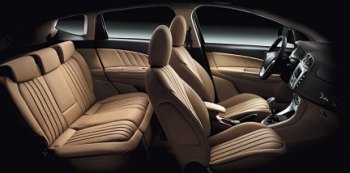 |
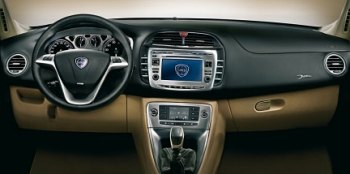
|
|
I like the downsized turbocharged
engines introduced by Fiat
group recently. They offer plenty of low down torque for relax driving.
They are frugal and they head towards the right direction of saving our
planet. The new Delta offers the best of the bunch. Petrol engines are
1.4 T-Jet turbo in 120hp or 150hp form. Diesel engines include 1.6
M-jet with 120hp, 2.0 M-jet with 165hp and the latest 1.9 M-jet
twin-turbo with 190hp. The latter's 2-stage turbocharing system, which
employs a small turbo for low rev and a large turbo to take over at
higher rev, provides serious performance in real world - which is not
exactly reflected by the 0-60 mph time of 7.5 seconds. The only
downside is a gruff top end delivery.
Next year will join a 1.8-liter turbo petrol engine. It comes with
direct injection and dual-VVT to produce 200 horsepower. This will be
the ultimate range topper. Well, I know the last Delta had 215 horses
on tap, but as mentioned before, comparison with the old Delta is
pointless.
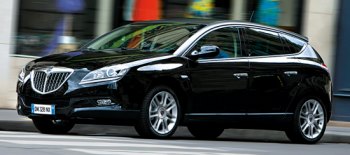
|
Tracing back to the years of Fiat
Stilo, we can't ask too much from this platform...
|
As mentioned before, the new Delta is
built on the platform
of Fiat Bravo. This is a conventional family hatch platform riding on
MacPherson strut suspension up front and torsion beam suspension at the
rear, and steering is provided by Fiat's notoriously lifeless
electrical power steering. The platform can be dated back to the
years of Fiat Stilo, so we cannot ask too much from it, especially when
the Lancia application has a higher center of gravity. What Lancia
could improve is to add an electronic adaptive damping as optional
equipment, and a more advanced traction and stability control with
fancy names - "Absolute Handling System" and "Torque Transfer Control".
Forget these names, on the road the Delta displays quite a lot of body
roll and understeer in tight corners, even when you switch on the
"Sport" mode of its adaptive damping. Clearly, this car doesn't like to
be pushed. And you won't enjoy doing so because its steering doesn't
respond quickly to your wish. There is no much communication from the
front tires to your hands, or from the seat to your pants. On the
positive side, the ride is good because of the soft suspension setting
and long wheelbase.
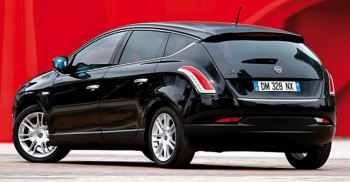
|
You can't deny that it fits well into
the new role of Lancia...
|
So this is the new Delta. Fans of the
old car will be
disappointed by its change of character. However, you can't deny that
it fits well into the new role of Lancia, which speaks luxury.
Fiat will relaunch this car and the Lancia brand in UK, Scandinavia and
Japan. It should have no problem to lift the company's
sales from 124,000 units last year to 150,000 units this year. But to
reach the 300,000 units sales goal in 2010 will be very difficult,
considering the Delta's mass-market interior and poor handling will be
difficult to lure customers from German premium brands.
|